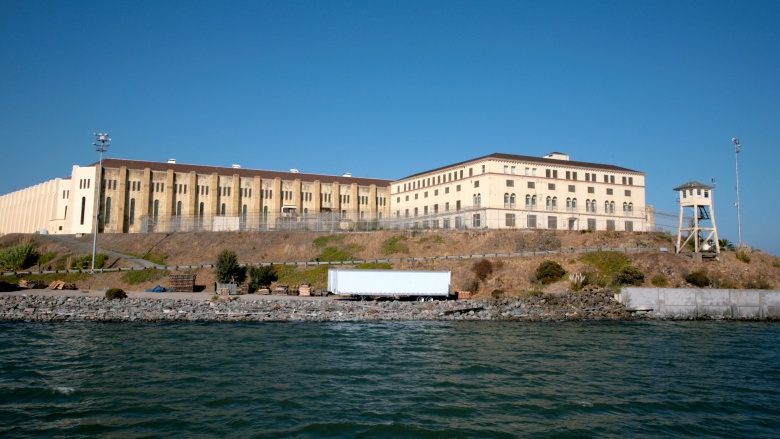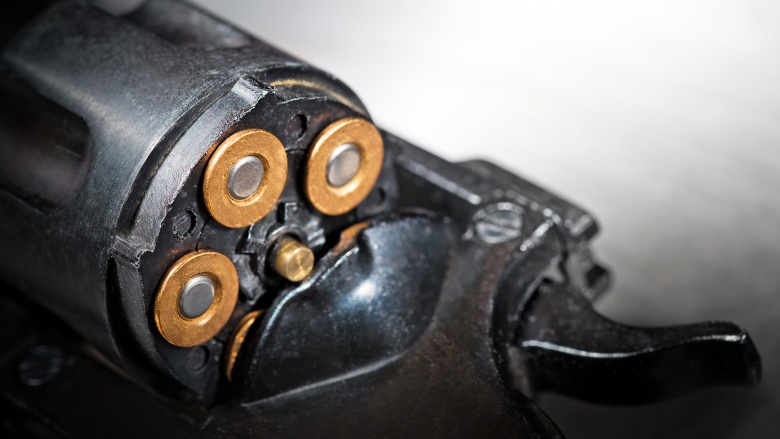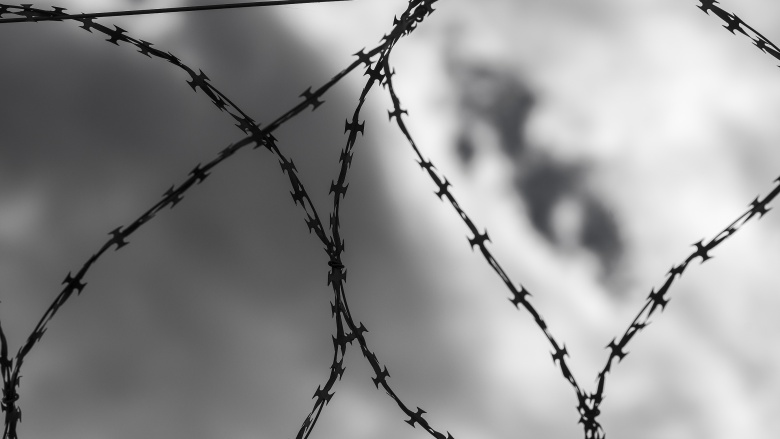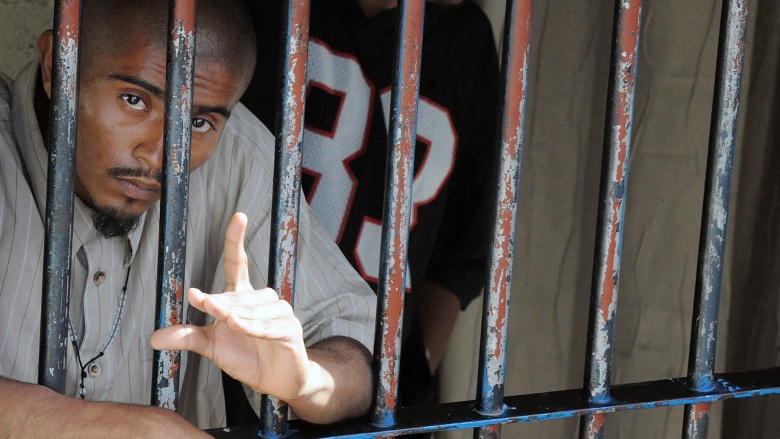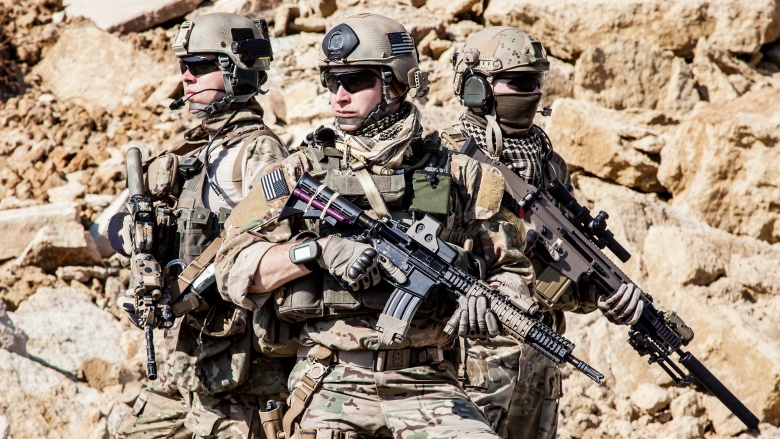Most Violent Prison Riots Ever
Stepping inside a prison is like traveling to a different dimension, a medieval dystopia where the rules are unbearably strict, your neighbors are nightmarishly awful, and you have no control over anything. But sometimes, desperate inmates lash out against the system, trying to regain some of that control they left behind in the free world. When prisoners decide to rise up and riot, things almost always spin violently out of control.
The San Quentin Six
George Jackson wasn't a man you wanted to mess with. In 1971, the creator of the Black Guerrilla Family gang was charged with the murder of a corrections officer. Waiting for his trial to start, Jackson was staying at San Quentin State Prison... but had no desire to stay put.
On August 21, the gang leader met his lawyer, Stephen Bingham, and during their conversation, Bingham gave his client a lot more than just legal advice. When nobody was looking, the attorney (allegedly) passed Jackson a 9-millimeter pistol. When the lawyer left, Jackson grabbed a guard and freed around 30 inmates, sparking a riot that lasted over half an hour. Of course, Jackson wasn't concerned about overcrowding or lousy food. The riot was a cover for his escape attempt.
Before he took off, Jackson teamed up with six other inmates, and together they began capturing and killing prison guards. Two officers were shot to death, and another was stabbed, along with two inmates. According to eyewitnesses, the corpses were stacked in a cell, and soon the floor was covered with an inch of blood. Two other guards, Charles Breckenridge and Urbano Rubiaco, also had their throats cut, but they survived by playing dead. And in a twist of fate, the last person killed that day was George Jackson himself. As for his accomplices, the so-called "San Quentin Six" were tried for murder and assault, but it took three years for their case to get going as the proceedings were hampered by accusations of racism.
The 16-month trial (the longest one in California history at the time) finally ended in 1976, and only one inmate was found guilty of murder, even though he didn't physically kill anyone. As for the lawyer who provided the gun, Stephen Bingham had fled the country and wasn't tried until 1986...when he was acquitted.
The Lucasville insurrection
Many prison riots are spur-of-the-moment ordeals, but some uprisings are carefully planned affairs, such as the infamous Lucasville insurrection. The deadliest prison riot in Ohio history, this bloody affair began in April 1993, when officials at Lucasville's Southern Ohio Correctional Facility announced inmates would have to be tested for tuberculosis.
This didn't sit well with the prison's Muslim population, who said this test violated their religious beliefs. When prison officials refused to listen to their complaints, the inmates took the next logical step. They allied with the Aryan Brotherhood and the Black Gangster Disciples, and together, this unholy trinity concocted a plan to take control of the prison.
On Easter Sunday, the facility plunged into anarchy. Inmates armed with shanks, baseball bats, and weight-lifting equipment captured at least eight guards. Working in tandem, the three gangs staked out separate parts of the prison and began dispatching potential snitches. One man was gruesomely murdered when inmates shoved paper and plastic bags down his throat. Things got worse when officials shut off the building's water and power. In retaliation, some of the prisoners murdered a corrections officer named Robert Vallandingham.
Finally, 11 days into the standoff, officials and inmates agreed to a list of demands. But unbeknownst to the prisoners, the FBI had secretly rigged passages underneath the facility with microphones. Now, authorities had info regarding the ringleaders, and after the siege ended, several inmates were sentenced to death for murdering nine prisoners and one guard. On the flip side, the government was forced to pay $4.1 million to inmates who were injured or traumatized during the insurrection.
The Canon City slaughter
In the Roaring Twenties, James Pardue was a bandit from St. Louis who wound up inside the Colorado State Penitentiary. The prison was located in Canon City, but the climate wasn't to Pardue's liking. With the help of an outsider, Pardue managed to get ahold of a gun, and one day during dinner, the bandit staged a full-fledged mutiny. With the help of a few hundred inmates, Pardue quickly overtook the facility and made himself at home in the prison's arsenal.
It didn't take long for police officers and National Guardsmen to arrive, but as the drama unfolded, Pardue faded into the background. Now, the spotlight focused on Danny Daniels. The real villain of our story, Daniels was a jewelry thief, and along with four friends, he took several guards hostage in Cell House No. 3. The gang demanded getaway vehicles, and if the warden didn't pony up, Daniels was going to start executing officers.
As Daniels threatened the guards, 150 other inmates battled it out with the cops, even going so far as to set most of the prison on fire. The authorities struck back with a load of dynamite. The plan was to blow up the prison walls and storm the facility. Oddly enough, a Catholic priest volunteered to set the charges. Unfortunately, the dynamite didn't work, and the authorities couldn't reach Daniels in time.
While most of the rioters eventually surrendered, the jewelry thief opened fire on the officers...and then he killed his four compatriots before turning the pistol on himself. In total, eight guards and five inmates lost their lives.
The 1989 Davao hostage crisis
In August 1989, 15 missionaries from the Joyful Assemblies of God visited a Filipino prison in Davao City. The plan was to lead a peaceful prayer service, but this particular prison was housing a gang known as the "Wild Boys of Davao." These thugs had recently led a riot at a nearby penal colony, and now they were awaiting trial behind bars. So when the missionaries showed up with a message from God, the Wild Boys responded by taking everyone hostage.
Nine of the missionaries were women, and one was a nine-year-old child. Over the next several hours, they were held captive as the Wild Boys negotiated with the military. The gang members demanded to speak with high-ranking government officials, but they didn't get their wish. Nevertheless, they eventually agreed to release the missionaries. Unfortunately, before the transaction took place, shots were fired, and most of the captives were dragged back inside the prison.
After learning some of the women had been raped, the military flooded the prison with tear gas and raided the compound. By the time the siege was over, five missionaries were dead, along with 15 or 16 thugs. However, there was a bit of controversy in the raid's aftermath. While the military claimed the prisoners had killed all the hostages, there was debate over who shot a 36-year-old Australian named Jacqueline Hamill.
Stranger still, Rodrigo Duterte, the controversial mayor of Davao City, claimed he was involved in the gunfight. Duterte would later go on to make a rape joke about one of the victims, all before becoming president of the Philippines in 2016.
New Mexico prison riot
In 1980, Old Main Penitentiary was just waiting to explode. This New Mexican prison suffered from major overcrowding and glaring security lapses. Plus, there was some pretty serious corruption. Prison officials often forced inmates to snitch on their fellow convicts, and all this tension finally boiled over on the morning on February 2.
After getting drunk on a nasty batch of prison hooch, a gang of convicts decided to jump a few guards and take over the Old Main. These inebriated inmates got ahold of a pair of keys and then spread throughout the prison, freeing hundreds of their fellow convicts. Many of the inmates broke into the pharmacy where they helped themselves to all the free drugs. Others armed themselves with power tools and hatchets and went on a devastating murder spree.
The biggest bloodbath went down on Cell Block 4, the area where all the snitches stayed. Using blowtorches, the inmates cut their way into the cells and began hacking, hanging, and beheading. In addition to the snitches, 12 guards were taken hostage, and several were beaten and raped. One was even forced to crawl around like a dog with a belt around his throat. Parts of the prison were set on fire, multiple inmates overdosed on pharmaceutical drugs, and over 100 men were brutalized.
In total, 33 people died in 36 hours. As one inmate described it, the whole scene was like a "zombie apocalypse." Eventually, National Guardsmen stormed the prison, but the surviving inmates surrendered without a fight, possibly because so many of them were stoned on barbiturates. After the riot, Old Main was closed down in 1998, although you can tour the prison today. And if you look close enough, you can still see burn marks and hatchet marks on the floor.
The Attica prison riot
In Dog Day Afternoon, Al Pacino plays a bank robber who taunts cops with cries of, "Attica! Attica! Attica!" That line was a pretty fresh reference in 1975. Just four years before, New York's Attica Correctional Facility was the site of the deadliest prison riot in American history.
Leading up to September 9, 1971, Attica inmates were only allowed one roll of toilet paper a month, and doctors often ignored injuries like broken bones. Many black inmates were subjected to intense racism from the guards. According to one convict, the entire place was run on "anger" and "fright." Earlier that year, a few inmates had gone on strike, and more recently, a prisoner had allegedly punched a guard. So when a group of inmates found themselves locked inside a tunnel, they assumed the guards were coming for revenge.
Desperate, the inmates revolted, sparking a riot throughout the prison. Over 1,300 men took several guards hostage, and sadly, one officer was beaten. (He was the only guard killed by the inmates.) After taking control of the prison, the men converged in D Yard where they picked leaders, set up tents, and began making demands. They wanted things like religious freedom, healthier diets, and better healthcare. They even asked Governor Nelson Rockefeller to visit the prison, but he turned down the invite.
Five days into the uprising, around 600 guards, cops, and volunteers invaded the prison. After bombing the yard with tear gas, law enforcement opened fire, killing 39 men, including the guards who were taken hostage. Surviving inmates were then beaten up, urinated on, and forced to play Russian Roulette. But despite the bloodshed, no cops or corrections officers were ever prosecuted. In fact, New York officials covered up the massacre and never apologized for the attack.
The Featherston incident
During World War II, many Japanese POWs were incarcerated in Australia and New Zealand. One of these Pacific prison camps was known as Featherston. Originally, Featherston served as New Zealand's biggest training camp during World War I, but it was quickly rebuilt and revamped in September 1942. Unfortunately, like many prisons, Featherston suffered from massive overcrowding. It was only meant to hold 450, but soon, it was hosting 800 inmates.
The camp was also staffed by reservists with no prison experience. On top of that, the place was packed with unhappy inmates. Many of the Japanese POWs were deeply ashamed to have been captured, and they were insulted when camp officials ordered them to work. Not understanding forced labor was protected by the Geneva Convention, the Japanese troops repeatedly refused to follow orders. And on February 25, 1943, a massive protest led to disastrous results.
Upset the Japanese had launched a sit-down strike, nearly 50 New Zealand troops armed themselves and surrounded the prisoners. Hoping to restore order, a few guards tried to arrest the ringleaders, but in the ensuing chaos, a Japanese officer was shot in the shoulder. Infuriated, the POWs began hurling rocks and improvised throwing stars at the guards. And that's when a lone soldier—whose brother had recently been executed by the Japanese—opened fire with his submachine gun.
The rest of the guards followed suit, sending bullets ricocheting in every direction. In less than a minute, 48 prisoners and one guard had been killed or fatally wounded. Government officials quickly went into cover-up mode, fearing news of the slaughter would inspire Japanese retaliation. Today, there is a memorial garden near Featherston, where 68 cherry trees were planted in memory of what happened in 1943.
The El Porvenir prison riots
If you ever visit Honduras, try not to wind up inside El Porvenir. Located near the city of La Ceiba, El Porvenir is one of the most dangerous prisons in South America. Over the years, this correctional facility has seen its fair share of escape attempts and riots. For example, back in 1998, inmates set the place on fire, and close to 250 convicts escaped. But that's nothing compared to what happened in 2003.
After a shakedown gone bad, about 100 members of the gang Mara 18 decided it was time to take over the prison. Armed with pistols, grenades, and assault rifles, the thugs attacked the rest of the inmates, and one of the grenades sparked a deadly fire. However, the rest of the prison population armed themselves with knives and fought back, defeating the better-armed but outnumbered gang members. All told, 69 people were killed in the onslaught, including three women visiting the prison.
Things got crazy again in 2004, when members of Mara 18 got into a slugfest with members of a rival gang, Mara Salvatrucha. Taking advantage of the situation, some of the gangsters set parts of the prison on fire, hoping to escape amidst the chaos. Soon, people were pulling out pistols and shanks, and by the time authorities got the situation under control, a staggering 86 inmates had died from the blaze, smoke inhalation, and injuries inflicted during the melee.
The Kengir uprising
Life in a Soviet gulag was a living hell. Things were especially bad at the Kazakh labor camp called Kengir. At this prison, the guards were insanely sadistic and often shot inmates for no apparent reason. They killed everyone from old men to young girls, many of whom weren't hardened criminals but political enemies imprisoned for their beliefs.
Of course, you can only push people so far before they go full-on Snowpiercer.
On one occasion, the Soviet guards killed a man who was minding his own business and then tried to drag his body into no-man's land. The plan was to make it look like he was trying to escape, but when the prisoners saw what was happening, they grabbed their picks and shovels and chased the Soviets away. However, when the guards prevented the prisoners from giving their comrade a decent burial, the workers went on strike.
Furious, Soviet officials decided to break the strike by filling the camp full of legitimate criminals, tough thugs who would harass the protestors. But that plan backfired when the crooks joined forces with the political prisoners, and together, the inmates took over the camp. For 40 days, Kengir was a little paradise in the middle of nowhere. The prisoners started their own government, opened little businesses, and even put on plays and lectures. Perhaps most importantly, the inmates did away with the barriers between the male and female camps, allowing many prisoners to get married.
Of course, this was too good to last, and on June 25, the Soviets struck back. A legion of snipers, dogs, foot soldiers, and tanks smashed into the prison, and absolute chaos ensued. According to official stats, only 37 prisoners were killed. But according to the men and women who survived the bloodshed, the numbers were in the hundreds.
The battle of Qala-i-Jangi
Located in the Afghan town of Mazar-i-Sharif, the fortress of Qala-i-Jangi dates back to the 19th century. It's witnessed quite a bit of combat over the years, but in 2001, Qala-i-Jangi saw one of the bloodiest prison riots in history.
The debacle got started after the US invaded Afghanistan. In the early days of the conflict, a group of Taliban fighters surrendered to the Northern Alliance. According to some sources, the Taliban believed they were simply giving up their weapons and not submitting to arrest. According to other sources, they were secretly planning a coup the whole time.
Whatever their motives, over 300 men were incarcerated at Qala-i-Jangi, and on November 25, several inmates were interrogated by two CIA officers. Suddenly, the prisoners revolted, killing CIA officer Johnny "Mike" Spann, making him the first American casualty of the Afghanistan War. The inmates then quickly took control of the prison, helping themselves to the AK-47s and RPGs located in the armory.
Soon, Northern Alliance troops were reinforced by Afghan soldiers and both British and American special forces. Over the next few days, the US dropped multiple bombs on the prison, blasting the inmates to bits. In the final hours of the battle, the remaining Taliban fighters took shelter in a basement. Wanting to end things, Northern Alliance troops (possibly under the guidance of American soldiers) filled the basement full of oil and set the place on fire. When that failed to finish the job, they poured freezing water into the basement.
By the end of the conflict, only 86 prisoners were still alive. Due to the intense firepower leveled against the prisoners, many activists called for an inquiry, claiming US and British forces violated the Geneva Convention. Of course, nobody was ever charged with a crime.

